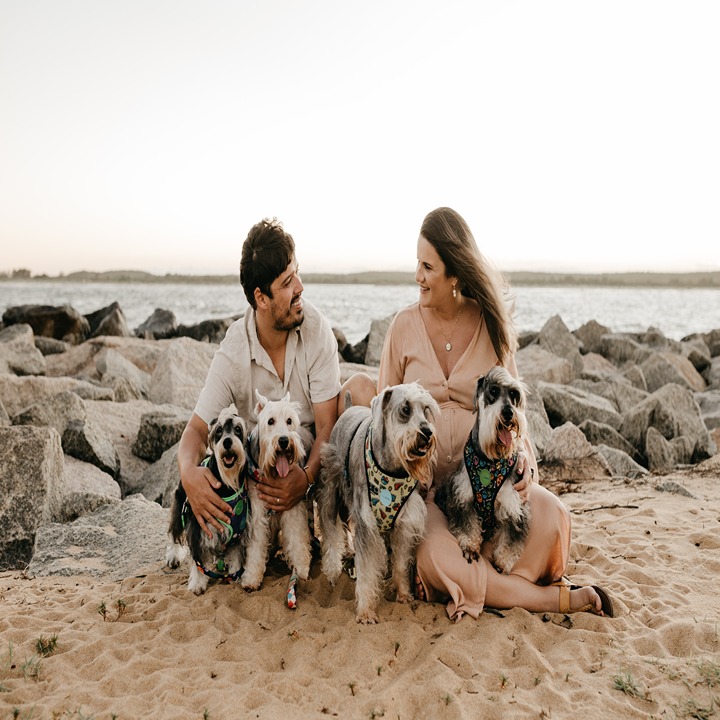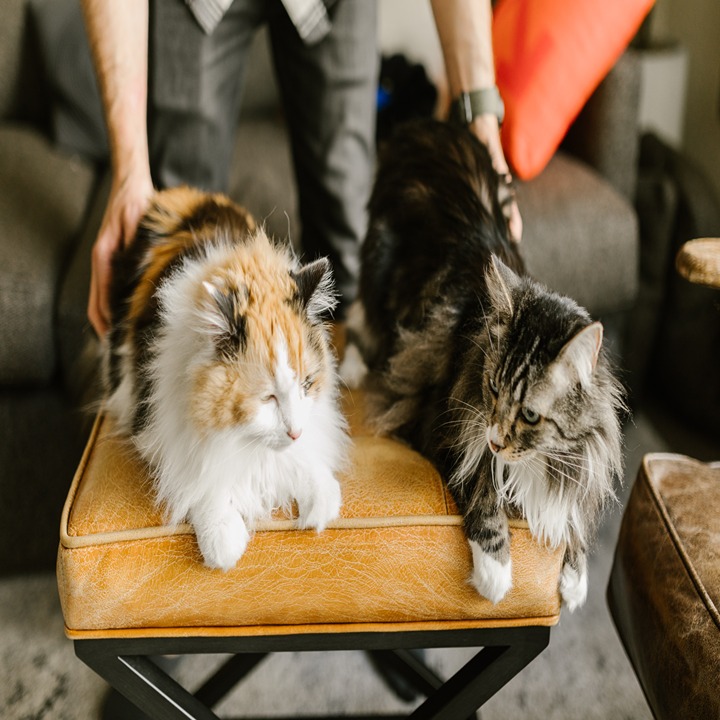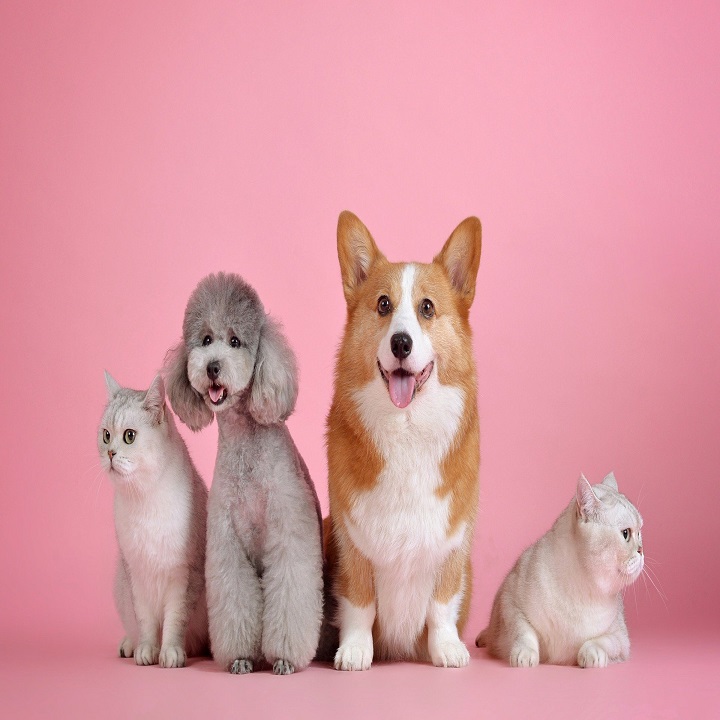After hearing “fighting like cats and dogs” so often, you’ve probably heard of cats and dogs who get along so well. So, what’s the deal? Is it possible for dogs and cats to coexist together, or are they doomed to conflict? Many dogs will get along with cats, and not all cats will love living with a dog.
Puppies and kittens who have been exposed to cats as young animals will be more at ease with cats as adults. And some dog breeds are perfectly adapted to living with a cat, and a few species aren’t.
It is not easily possible for dogs and cats to become fast friends or at the very least coexist peacefully if the dog is taught appropriate behavior around cats and the cat is provided with safe-havens.
The best tips for cats and dogs living together.
Table of Contents
Toggle

Allow interaction only under your supervision
It would help if you allowed interaction solely under your supervision, especially the first few weeks after your cat and dog have newly met. This is for the safety of your canine companions, your cat and your canine companion. Your cat and dog may become violent and hurt one another when they are left alone.
Keeping your dog and cat in a peaceful relationship
Once your cat and dog have been successfully acquainted, you may do dozens of things to maintain their lives as peaceful as possible.
- Maintain a core area for your cat where they can eat, sleep, drink, play and toilet without having to come into contact with your dog if they prefer not to s• Provide your cat with lots of vertical space so that they can move around without having to pass your dog at ground level. Things like ledges and bare shelving are great for this.
- Never punish your dog for being quiet around your cat; doing so could lead to a negative association that could exacerbate your dog’s behavior. Instead, praise your dog whenever he behaves calmly around your cat. If you can’t trust them around your cat, keep them separated and your dog on a lead to prevent chasing
- A weary dog is more likely to be calm around your cat, so make sure you keep your dog mentally and bodily busy.
- Remember, as the smaller, more fragile animal, introductions should always be at your cat’s pace, and they should always be able to get away quickly if they choose to.
Tips for introducing new cats and dogs to your home, including dogs and cats
- It can take weeks or months to introduce a new canine to your resident cat gradually. Be patient, but remember that whether or not pets get along will rely as much on their personality as on your actions. To increase your chances of success, consider the following suggestions:
- Decide on a suitable place for your initial meeting. For example, if your cat is a long-term resident of the living room or kitchen, it may act territorial and offend another animal’s invasion of its domain. Neutrality is the first point.
- Separate the animals at first: Rotate the animals’ freedom and confinement over several days to give each pet ample chance to examine the other’s scent.
- Please bring your cats and dogs into the same room to meet face-to-face, but make sure the dog is securely leashed. Continue to connect until your cat and dog are both relaxed and not bothering each other.
- Who should take the following stage cautiously until the pets get along during unleashed visits regularly? Remove the dog’s leash and allow the animals to grow better acquainted. Please do not leave them alone until you’re confident they’re entirely comfortable with each other.
- Properly introducing cats and dogs to live together can go a long way toward bringing peace to the household. Always be on the lookout for any potential problems. With patience, your cats and dogs will be cohabiting peacefully in no time.

Before meeting a dog, give a cat its territory.
- Galaxy claims that cats require a private, secure haven that they may call their own. Don’t allow your dog in this sanctuary, but do your best to create other dog-free zones in your home. In this manner, the cat can confidently roam the joint area without issue from its canine brother.
- Since cats are natural climbers, Galaxy recommends taking advantage of your home’s vertical area. Buy tall cat trees, add shelves, or set a cat bed on a bookcase. This allows your cat to view the dog safely or cross a room without touching the floor.
- Keep dogs away from the kitty litter box while you’re at it. Cats should feel protected when doing their business, plus dogs sometimes (ugh) prefer to feast on cat feces, a nasty habit that can cause your canine to get intestinal parasites. These worms can cause many health problems, including vomiting, diarrhea, weight loss, and anemia.
- The litter box should remain exposed and in an open place if a dog manages to get out, but baby gates can be helpful in an emergency. That way, the cat won’t be cornered and imprisoned mid-squat.
Permit the cats and dogs senses to mingle.
Animals come to know one another by scent, not face-to-face meetings. Begin combining the animal’s odors by caressing the cat, then stroking the dog and vice versa. You should rotate the rooms where your animals are kept so that they can detect each other’s scent even if the other animal isn’t there. Try gently massage a towel or washcloth on the dog, then place it near the cat’s food dish or bed. Rub the dog’s scent item over the cat for a few days to mix their odors. For your dog, perform the method in reverse. Try feeding the cat and dog on different sides of the same door; this will cause them to acclimatize to the scent of the other animal.
Introduce a Dog and Cat for the First Time
- who should adequately monitor the initial meeting between your cat and dog and brief; here are some ways you could go about this;
- You can have the animals meet from opposite sides of a pet gate at first, but don’t allow them to touch noses or otherwise go too close until one is more accustomed to the sight of the other. Put the cat or small dog in a carrier or crate and let the other pet sniff and circle the restricted animal. The temperament of the confined animal heavily influences this. You never know if the other animal will be comfortable with a stranger hovering outside or if it would make them feel trapped. Keep your dog’s leash on and stroll them into the same room with the cat for a brief time. Catch your cat in your arms until it is quiet and relaxed, then ask a family member or friend to carefully bring your dog on a leash into the room. Please do not allow the animals to come into physical touch with one another; instead, progressively introduce them to one another.

Separate your cats and dogs once again
Don’t push them to interact for too long; this will merely weary them, resulting in conflict. Keep things short and humorous to generate a great first impression. Gradually increase the lengths of these sessions. Make sure your cats and dogs feel at ease by spending time with him or her.
Exercise your dog’s body and mind.
- “People exercise their dogs perhaps 20 percent of what they should really be doing,” Sandor explains. “It’s incredibly crucial that their energy is released somewhere else so that they have the ability to slow down their thoughts and really control themselves when they’re around kitties.”
- Dogs also need lots of stimulation. Receiving it in a regulated manner makes them less likely to satisfy it by, for example, chasing a cat. Sandor recommends toys, herding-type exercises, lure coursing, and high-intensity trick training.
- Instead of simply strolling every five blocks, she advises performing a sit-up exercise five times in a row. “And do direction changes three times on every block, or speed changes two times. It’s about unleashing their herding tendencies and hunting drive properly.”
- As an alternative, Zoe suggests that dog walkers are hired or that doggie daycare is joined.
Like humans, every dog may have slightly different preferences for signs of affection. Try out these techniques and get to know your pup to see what they like the best! Then shower them with all the affection you can muster – they’ll likely return the love tenfold.
Don't Miss:
 Top Useful Health Safety Tips For Cats And Dogs
Top Useful Health Safety Tips For Cats And Dogs
 Top 10 Advantages And Best Trainings For Camping
Top 10 Advantages And Best Trainings For Camping
 Top Amazing Camping Activities For Adventure In Camping
Top Amazing Camping Activities For Adventure In Camping
 The Most Popular And Useful Camping Accessories For Camping?
The Most Popular And Useful Camping Accessories For Camping?
 The Most Complete Guide On Choosing The Right Food For Your Dog And Cat
The Most Complete Guide On Choosing The Right Food For Your Dog And Cat
 7 Dogs And 11 Cats That Will Never Eat The Same Food Again
7 Dogs And 11 Cats That Will Never Eat The Same Food Again
 5 Reasons Your Cat May Not Want To Eat Enough
5 Reasons Your Cat May Not Want To Eat Enough
 Best Needs And Advantages Of Camping Accessories In 2022
Best Needs And Advantages Of Camping Accessories In 2022









